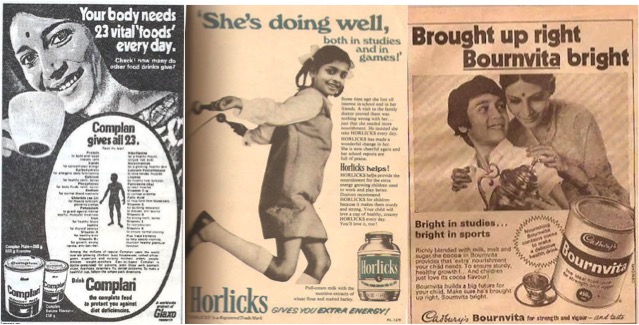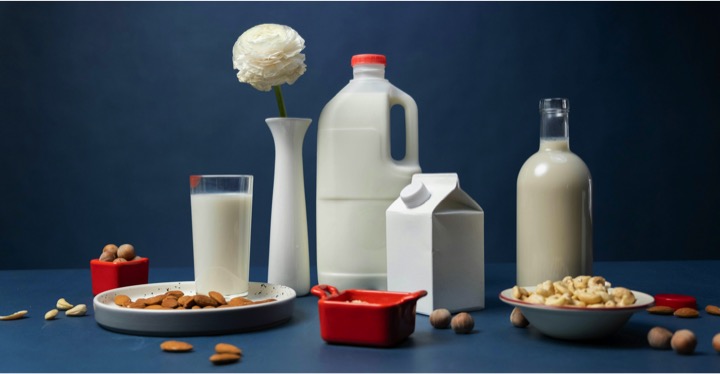Sugar is not the problem with Bournvita. 200 ml of milk with one serving of Bournvita contains 6.5-7.5 gms of added sugar only .Which is far less than sugar found (14-20 gms) in 200 ml of other drinks including fruit juice drinks sold in local markets.
Social media is a part of our lives now. We come across a lot of information by experts, semi experts and indifferent persons trying their hands in technical areas. Most of the time their aim is to create a buzz and gain overnight fame. I have no issues with the personal choices of these so called you-tubers or net bloggers. However the impact it makes in the decision making of masses at times is something to be seriously looked into.
I saw a trending video on nutritional deficiencies of malted foods like Bournvita. Suddenly the news started to spread like a jungle fire. At the end the company took some action and made the blogger remove his posts from all platforms. Various stakeholders like NPCPR etc requested FSSAI to look into the formulations and the claims made by these products. I kept on reviewing all the news related to this topic. Finally, an activist body Consumer Voice has written to the FSSAI and the Department of Consumer Affairs. It has urged them to revise the regulations and labelling guidelines for the entire health drinks category. Besides Bournvita, Hindustan Unilever’s Horlicks and Boost and Nestle’s Milo are a few other big brands in this category.

Also read : How sugar turned bitter for Bournvita
This surprised me completely. I follow Consumer voice and study all their testing and rating studies on dairy and related food products regularly. I would like to start with the excerpts from the July 2013 report by Consumer-Voice on the same subject. You may find this report on internet easily.
Key findings from July 2013 Consumer Voice

It further concludes the results and properties of malted foods as follows :

Now the same agency is after these malted foods companies.
As I was studying various articles there were questions related to sugar content in these malted foods. Firstly we need to understand that these products are not advised to consume directly. Rather they are a supplemental way to make a child or adult drink milk. We need to look at the sugar per serving rather than as available in the final product.
I am thankful to one of my senior mentors in the dairy industry . He shared an informative write up on malted food with Fact check on nutrition of health drinks. You may read it below.
Also Read : Fact check on nutrition of health drinks like Bournvita and Horlicks
The article talked about added sugar and calories released in different brands of health drinks. These findings were also quoted by an anchor of the fastest news channel a few days back on prime time. First look at those findings below.
But who cares and read so deep ?
Complan recommends a 33g serving, which would make one serving contain nearly 8g of sugar. Bournvita recommends 20g, making it 6.5g of sugar, and Horlicks doesn’t explicitly recommend serving sizes.
“Horlicks Classic Malt has 21.3g of carbohydrates of which added sugar is 3.7g per serve. That is well within the NIN recommendation,” said a GSK spokesperson.
India doesn’t have recommendations for sugar consumption. But the latest WHO mandate recommends a cap of 100 calories (5 %) in a 2,000-calorie diet.
A gram of sugar provides four calories. At 8g of sugar, Complan provides 32 calories; at 20g, Bournvita provides 80 calories, and Horlicks provides 17 calories.
All of these are well within the upper allowed limit of 100 calories from sugar but this would mean that someone consuming Bournvita, for example, is allowed only 20 additional calories to stay within the prescribed sugar limit. That rules out even another serving of Bournvita.
“You can look at the calculations that the calories per serving of Bournvita have been wrongly calculated as 80 cals for 20 gms, rather it should have been 6.5*4 i,e 26 calories only.“
Are we a country of healthy children ?
The above fact check also mentioned that Sugar is an inhibitor for the absorption of both Vitamin D and Calcium. Furthermore, it is well documented that cow milk inhibits absorption of iron and its consumption is actually a leading factor for anaemia among infants. So even if Bournvita is fortified with Vitamin D and iron, and milk with Calcium, the sugar and milk will suppress the absorption of other minerals, nullifying their value.
Micronutrient deficiency or “hidden hunger”, however, will cause the body to quickly absorb micronutrients. So these quantities are beneficial to children who suffer from the deficiency of these nutrients but not for the ones who are otherwise healthy.
If India is considered as the diabetes capital of the world then it is also the capital of malnourished children . Read the report below .
Read my earlier blog on this here : Poverty is a definition but Malnutrition is a reality
Global Hunger Index 2020
The survey by Indian agencies reported that more than half the children under four were underweight and stunted. One in every six children was excessively thin (wasted). All these conditions could be attributed to the prevalence of chronic malnutrition in children.
Despite decades of investment to tackle this malaise; India’s child malnutrition rates are still one of the most alarming in the world. The Global Hunger Index (2020) — which is calculated on the basis of total undernourishment of the population, child stunting, wasting and child mortality — places India at the 94th spot among 107 countries. Countries such as Sri Lanka, Nepal, Bangladesh, Myanmar and Pakistan have been ranked higher than India on the Global Hunger Index at 64th, 73th, 75th, 78th and 88th spots respectively.
It has been mentioned that malted food business since its beginning in the late 1800s in the UK or post independence in India has been a product to provide nutrition to infants and children.
Is Sugar really bad ?
Everyone is talking about the 50% sugar content of Bournvita, but actually it is around 6.5-7.5 gms per serving. When we mix this serving in a glass of milk then it is further reduced to half. We are a country where every other soft drink, flavored milk, milk shakes,fruit juice, Fruit flavored soft drinks , Lassi and a plethora of new gen plant based drinks have 8-11% sugar. In such a scenario where does 200 ml of milk with Bournvita having 6.5 -7.5 gms of added sugar rate with other 200 ml drinks with 16-20 gms of added sugars. There is no such hue and cry on those products. I have not mentioned about other food products like Cakes, sweets, etc here.
Let us examine what our dietary guidelines by the National Institute of Nutrition talk about sugar for children and adolescents in India.

It is clearly showing that the children could consume upto 5-6 portions of 5 gms each meaning 25-30 gms of sugar per day. Does 6.5-7.5 gms of sugar through Bournvita, still pose a serious threat. The child will have ample scope to drink one more soft drink daily if needed which he may be doing otherwise also.
I believe in moderation in all things, including moderation
Lastly I checked with my latest net buddy Mr Chatgpt on what he feels about Bournvita. Look at the response below.
Bournvita is a popular malted chocolate drink mix that is often consumed as a source of nutrition and energy. Like many foods and drinks, whether Bournvita is “bad” for your health depends on how much you consume and how it fits into your overall diet and lifestyle.
In moderation, Bournvita can be part of a healthy diet. It contains various vitamins and minerals, including calcium, vitamin D, and iron, which can be beneficial for overall health. However, it also contains added sugar and calories, so consuming large amounts of Bournvita regularly could contribute to weight gain and related health issues.
It’s important to remember that Bournvita, like any other food or drink, should be consumed in moderation as part of a balanced diet. It’s also a good idea to check the label and ingredients list, and to consider other factors such as your individual nutritional needs, any health conditions you may have, and your overall dietary habits.
It is all about moderation. Even the healthiest of foods are bad beyond a certain limit. Everyone has a right to approach these respective companies and check the clinical research supporting their claims.
However, that should be done well before you make your social media debut.
I will appreciate your comments on this issue. My only surprise is that even the most experienced professionals from the dairy and food sector remain silent on such issues.
Believe me sugar is sweet but not bad . It is too much sweetness which is bad.
Source : Blog by Kuldeep Sharma Chief editor Dairynews7x7 channel
























